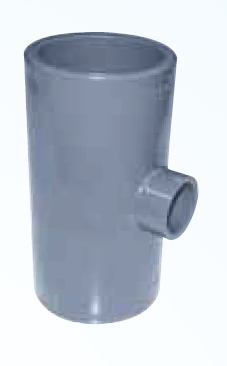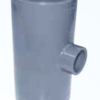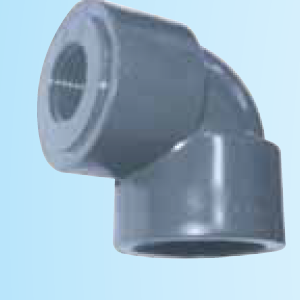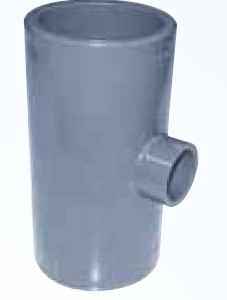Reducing Tee PVC plumbing fitting refers to a specific type of PVC T-shaped fitting that not only splits or diverts the flow of water or other fluids at a 90-degree angle but also incorporates a size reduction feature. The term “reducer” indicates that the T-fitting allows for the transition from a larger PVC pipe size to a smaller one or vice versa.
Here’s a breakdown of the components of the term:
T: The “T” refers to the shape of the fitting, resembling the letter “T.” It has one inlet (mainline) and two outlets (branches) at 90-degree angles to the mainline, creating a T-shaped configuration. This allows the flow to be split or redirected in two different directions.
90: The number “90” signifies the angle at which the branches are oriented from the mainline. In this case, the branches form a 90-degree angle with the mainline.
Reducer: The term “reducer” indicates that the T-fitting provides a change in pipe size. One of the outlets (branches) of the T will have a larger diameter than the other outlet, allowing for the transition from a larger pipe size to a smaller one or vice versa.
PVC: Polyvinyl Chloride is the material from which the fitting is made. PVC is commonly used in plumbing and construction due to its durability, cost-effectiveness, and resistance to corrosion and chemical damage.
A Reducer T 90 PVC fitting is used in plumbing applications where there is a need to combine pipes of different sizes at a 90-degree angle. It provides a convenient way to create branching points while simultaneously transitioning to a different pipe size. This type of fitting is commonly used in various plumbing configurations, such as connecting different pipe sizes in irrigation systems, water supply lines, and other applications where PVC pipes are used. As with other PVC fittings, proper solvent welding techniques are essential to ensure a secure and leak-free joint.
Top of Form






